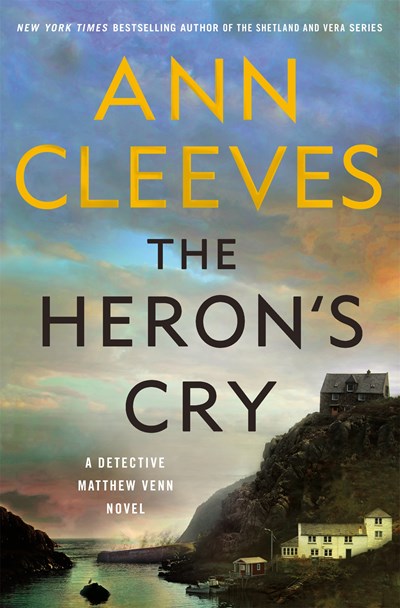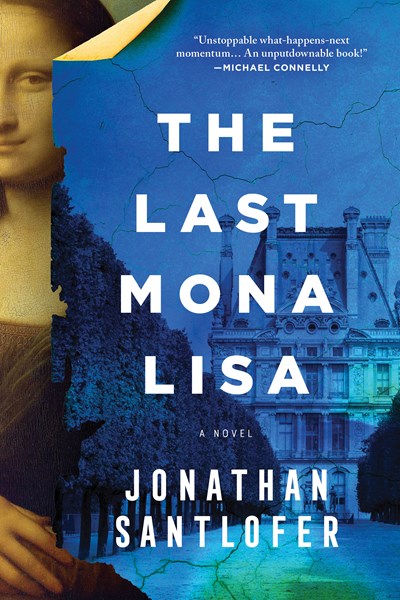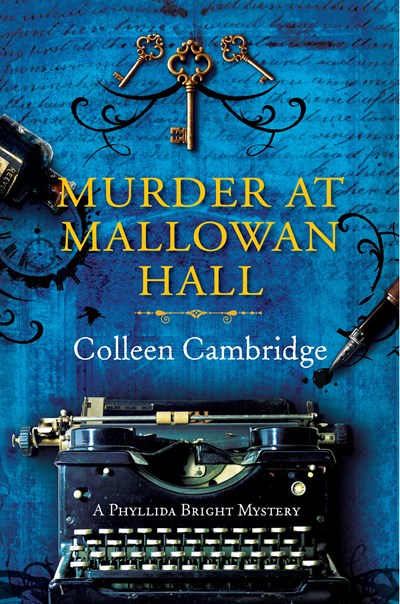Subtle and nuanced, this novel is the prolific Cleeves at the top of her game. Detective Matthew Venn is called to a sort of artist commune, where a body has been found in one of the studios with a large shard of glass protruding from its neck. The victim, Dr. Nigel Yeo, is the loving father of Eve, a glassmaker who lives and works in the commune. This sets in motion an investigation that gains urgency as the days pass and the bodies begin to stack up. Cleeves takes on some tough issues here—including suicide—and it’s one of her darker books. But as always with this author, the murder narrative is delightfully punctuated with insights into the lives of Venn—still recovering from his evangelical upraising—his husband Jonathan, fellow detectives, and even several of the suspects. Cleeves is the author of the hugely popular Vera and Shetland series, the latter now finished. Broadchurch viewers should appreciate Cleeves’ wide-angle lens and focus on community.
Brian Kenney
In 1911, Vincenzo Peruggia pulled off one of the greatest art heists of all time: the theft of the Mona Lisa. The painting was missing for two years before it was recovered, and the crime spawned innumerable conspiracy theories, with some suggesting that forgeries were made during its hiatus, including the painting now hanging in the Louvre. Flip to the present, when we meet Luke Perrone, an artist obsessed with Peruggia for good reason: Peruggia is his great-grandfather. When Perrone gets word that great-grandad’s diary has surfaced, he hightails it to Florence with the hope of learning more about his ancestor and the theft. Except Perrone isn’t alone in his quest, and he is soon being trailed by an INTERPOL agent, an updated femme fatale, and worse. It’s a pleasure to explore Florence and its art through Perrone’s eyes, and the shifts between 1911 and the present make for a compelling read. Santlofer, also a painter, creates a real sense of authenticity. Fans of Iain Pears and Barbara Shapiro are sure to love this novel.
Christie fans, rejoice! This fall will see the publication of not one but two novels set in Christie’s Devon country home. Cambridge’s Murder at Mallowan Hall is a near-perfect traditional mystery—the first body is found in the library, stabbed in the neck by a fountain pen—set during a house party in the early 1930s. But Cambridge flips the paradigm and instead of focusing on the posh guests, tells the story from the perspective of the help, most notably Phyllida Bright, housekeeper extraordinaire. Bright, a friend of Christie as well as an employee, models her investigation on Poirot, right down to the classic denouement delivered by Bright in the library. Gender roles, sexual harassment, and same-sex love are key elements, but Cambridge succeeds in keeping the novel squarely in its era. Two words describe this book: absolutely delicious. Greenway was the real name of Christie’s Devon estate, and Rader-Day’s Death at Greenway is painstakingly realistic. The book opens in London during the Blitz—which is wonderfully described—and we meet Bridey Kelly, a nurse trainee who has made a fatal mistake and is banished to the countryside with 10 young children escaping the bombing. Their destination is Greenway, which Christie and her husband have given over to the evacuees. But the Devon countryside offers little solace, with standoffish residents, a coast too close to the war, and the corpse of someone who was clearly murdered. Deeply suspenseful, this novel brilliantly captures the horrors of the war years and how individuals managed to survive through hardships both physical and emotional.



